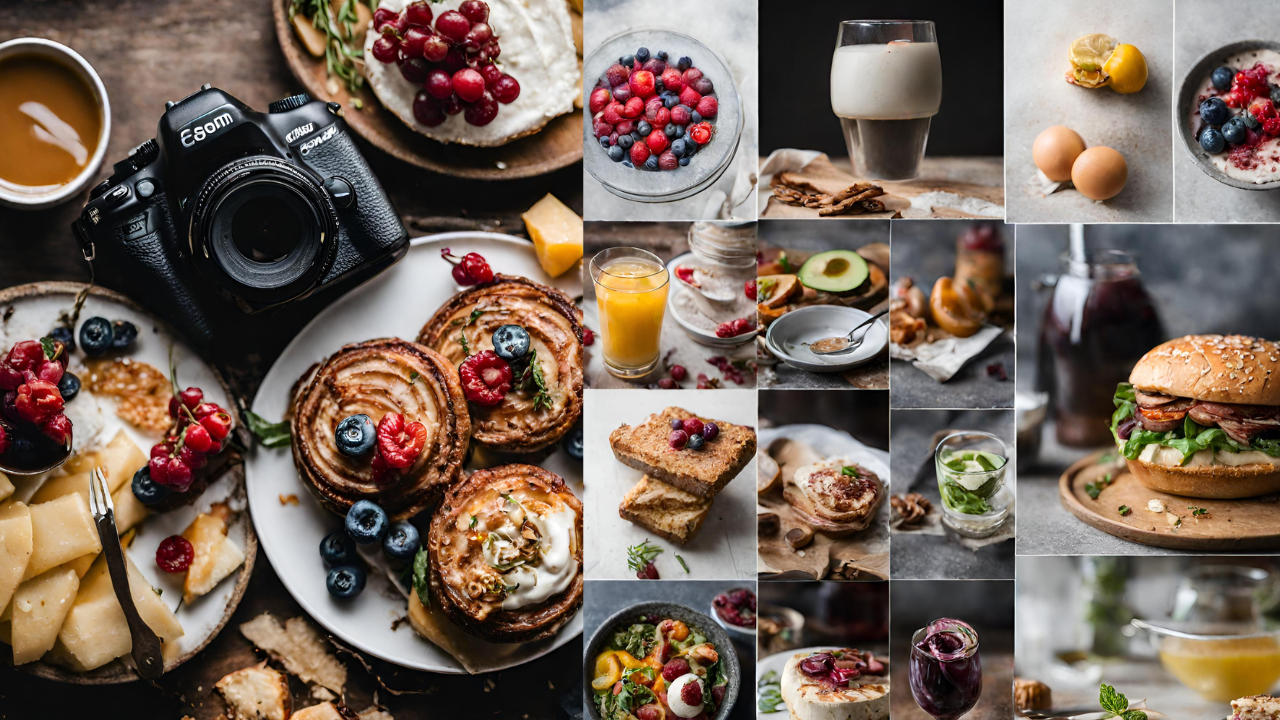SEO Meta Description
Learn everything you need to know about food photography in this comprehensive guide. From essential equipment to expert techniques, this article covers it all. Get ready to take your food photos to the next level!
Introduction
Food photography has evolved from a niche interest to a mainstream phenomenon, thanks to the rise of social media and food blogging. Whether you’re a professional photographer looking to expand your skills or an amateur foodie wanting to capture mouthwatering shots of your culinary creations, this guide is for you. In this ultimate guide to food photography, we’ll explore everything from essential equipment to advanced techniques that will help you elevate your food photos to a professional level.
Table of Contents
1. Understanding the Basics
1.1 What is Food Photography?
Food photography is the art of capturing images of food in an aesthetically pleasing and appetizing way. It involves careful composition, lighting, and styling to showcase the beauty and deliciousness of the food.
1.2 Importance of Food Photography
Food photography plays a crucial role in enticing customers for restaurants, cafes, and food delivery services. High-quality images can make a dish look more appealing and increase sales.
1.3 Evolution of Food Photography
Over the years, food photography has evolved from traditional studio setups to more natural and lifestyle-oriented styles. With the advent of social media platforms like Instagram, there’s been a surge in demand for visually stunning food photos.

2. Essential Equipment
2.1 Camera
Invest in a quality DSLR or mirrorless camera with manual controls to have full creative control over your shots.
2.2 Lenses
Prime lenses with wide apertures, such as a 50mm or 85mm, are ideal for food photography as they produce beautiful background blur (bokeh) and sharp images.
2.3 Tripod
A sturdy tripod is essential for keeping your camera steady and ensuring sharp images, especially in low light conditions.
3. Lighting Techniques
3.1 Natural Light
Utilize natural light by shooting near a window or outdoors for soft, diffused lighting that enhances the colors and textures of the food.
3.2 Artificial Light
Experiment with artificial lighting setups using softboxes or LED panels to control the direction and intensity of light for more controlled results.
3.3 Reflectors and Diffusers
Use reflectors to bounce light onto the subject and diffusers to soften harsh shadows, creating a more flattering and evenly lit scene.
4. Composition and Styling
4.1 Rule of Thirds
Apply the rule of thirds by placing the main subject off-center for a more visually dynamic composition.
4.2 Depth and Layers
Create depth and visual interest by layering elements in the frame, such as garnishes, utensils, and props, to add texture and dimension to the image.
4.3 Color and Contrast
Pay attention to color harmony and contrast by selecting props and backgrounds that complement the colors of the food and enhance its visual appeal.

5. Advanced Techniques
5.1 Macro Photography
Explore the world of macro photography to capture intricate details and textures of food up close, revealing its beauty in a new perspective.
5.2 Motion Blur
Experiment with motion blur techniques to convey a sense of action and dynamism in your food photos, such as pouring sauce or sprinkling toppings.
5.3 Storytelling
Use props, backgrounds, and settings to tell a story and evoke emotions in your food photos, creating a compelling narrative that engages viewers.
6. Post-Processing Tips
6.1 Editing Software
Learn how to use editing software like Adobe Lightroom or Photoshop to enhance your photos by adjusting exposure, color, contrast, and sharpness.
6.2 Presets and Filters
Experiment with presets and filters to create a consistent look and style for your food photos, but avoid over-processing to maintain a natural and authentic appearance.
6.3 Retouching
Master the art of retouching to remove blemishes, distractions, or imperfections from your photos while preserving the integrity of the food.
7. FAQs (Frequently Asked Questions)
To make your food photos stand out on social media, focus on creating visually striking images with vibrant colors, mouthwatering textures, and creative compositions that capture attention and evoke cravings.
What are some tips for photographing food in low light conditions?
When photographing food in low light conditions, increase your camera’s ISO setting to boost the sensitivity to light, use a wide aperture lens to let in more light, and utilize artificial lighting sources like LED panels or speedlights to illuminate the scene.
How important is styling in food photography?
Styling plays a crucial role in food photography as it helps enhance the visual appeal of the dish, create a mood or atmosphere, and tell a story. Pay attention to composition, props, colors, and textures to create visually stunning images.
What are the best angles for food photography?
The best angles for food photography depend on the dish and the story you want to tell. Experiment with different perspectives, such as overhead shots, 45-degree angles, or close-ups, to find the most flattering angle that showcases the food in its best light.
To make your food photos look more professional, focus on composition, lighting, and styling. Use props and backgrounds strategically, experiment with different lighting techniques, and pay attention to details like focus and depth of field.
Some common mistakes to avoid in food photography include using harsh lighting, over-styling the food, neglecting composition, and over-editing the photos. Keep it simple, focus on the food, and let its natural beauty shine through.
Conclusion
In conclusion, mastering the art of food photography requires a combination of technical skill, creativity, and attention to detail. By understanding the basics, investing in the right equipment, and experimenting with different techniques, you can capture stunning images that not only showcase the beauty of the food. So grab your camera, gather your props, and start snapping away to create mouthwatering food photos that will leave viewers craving for more.
